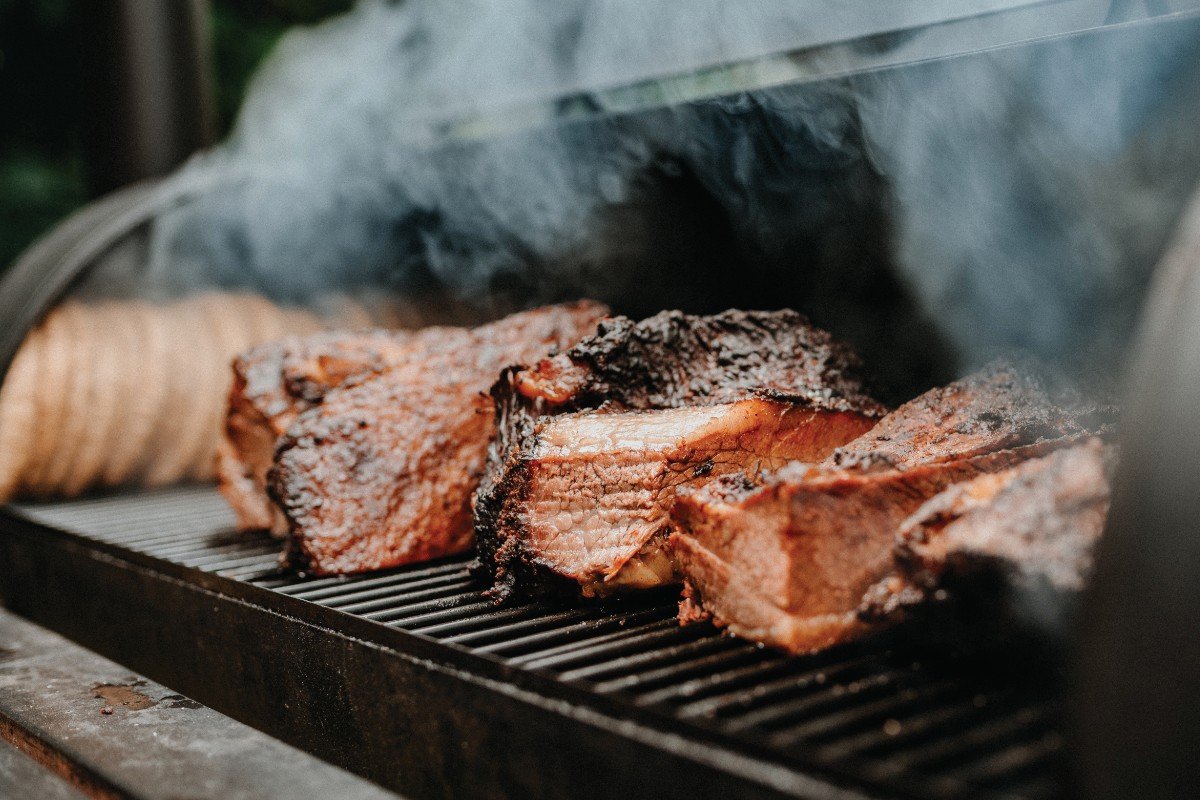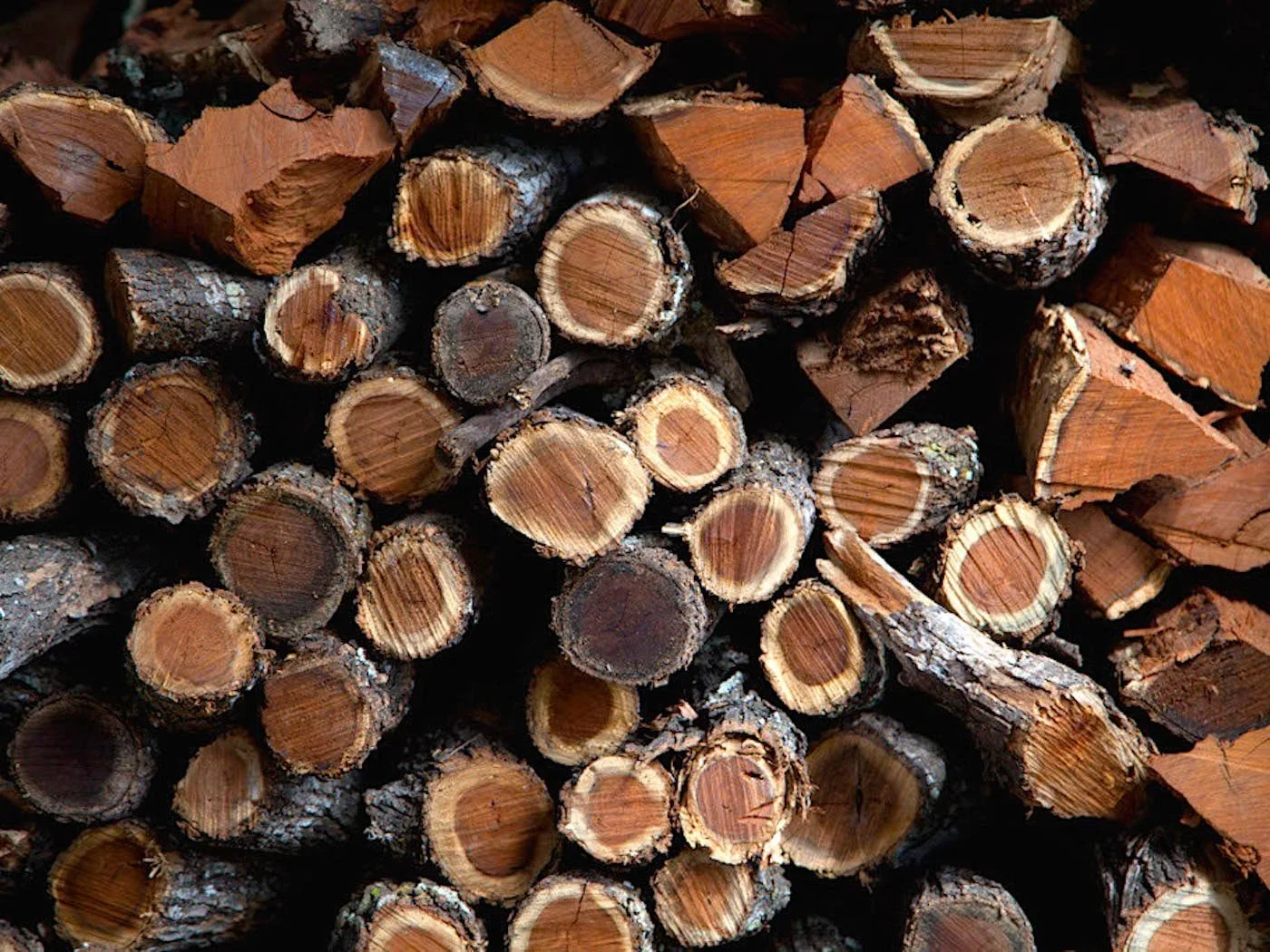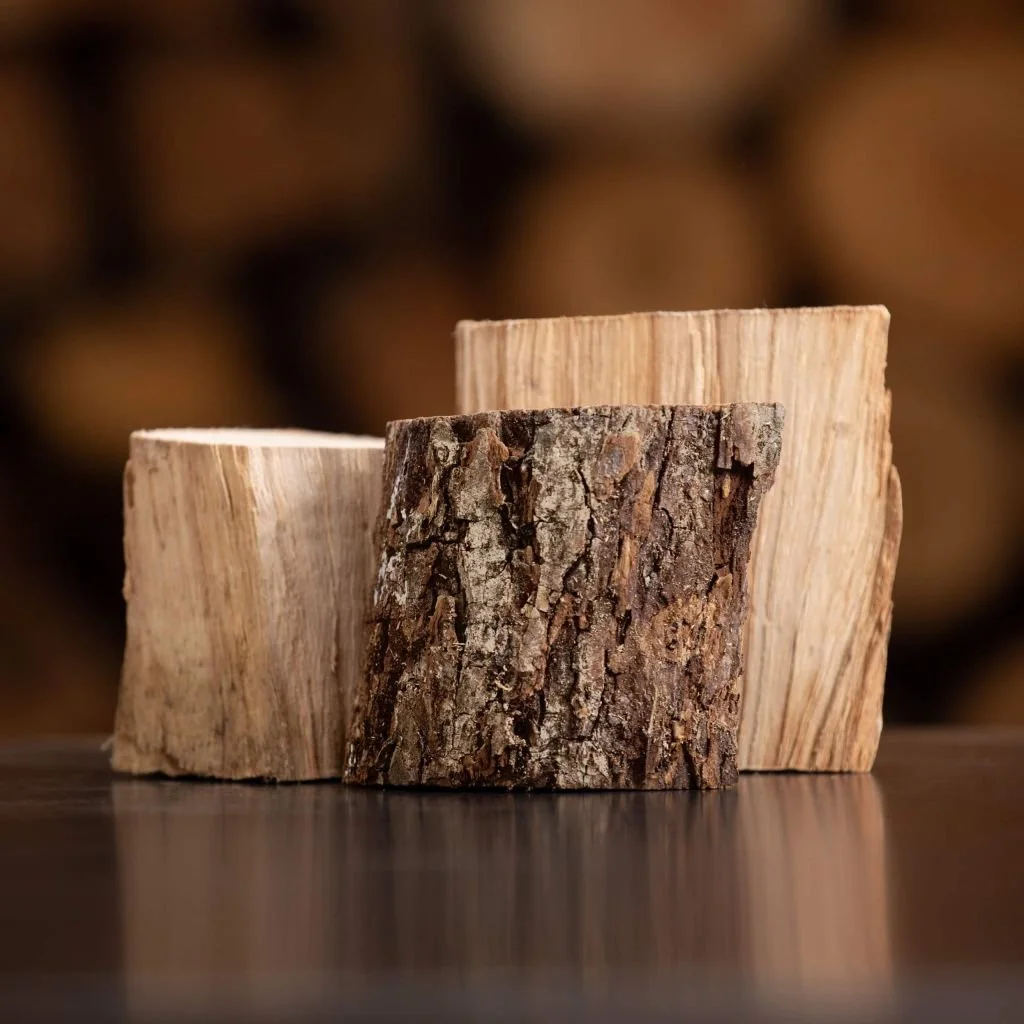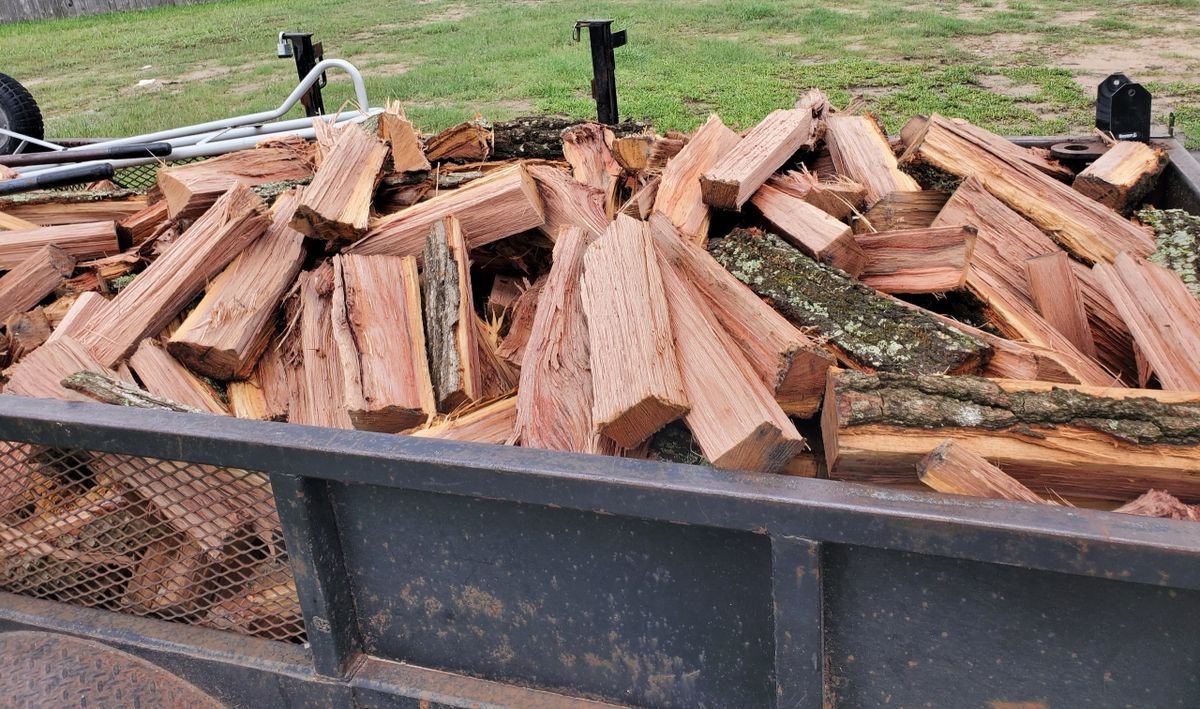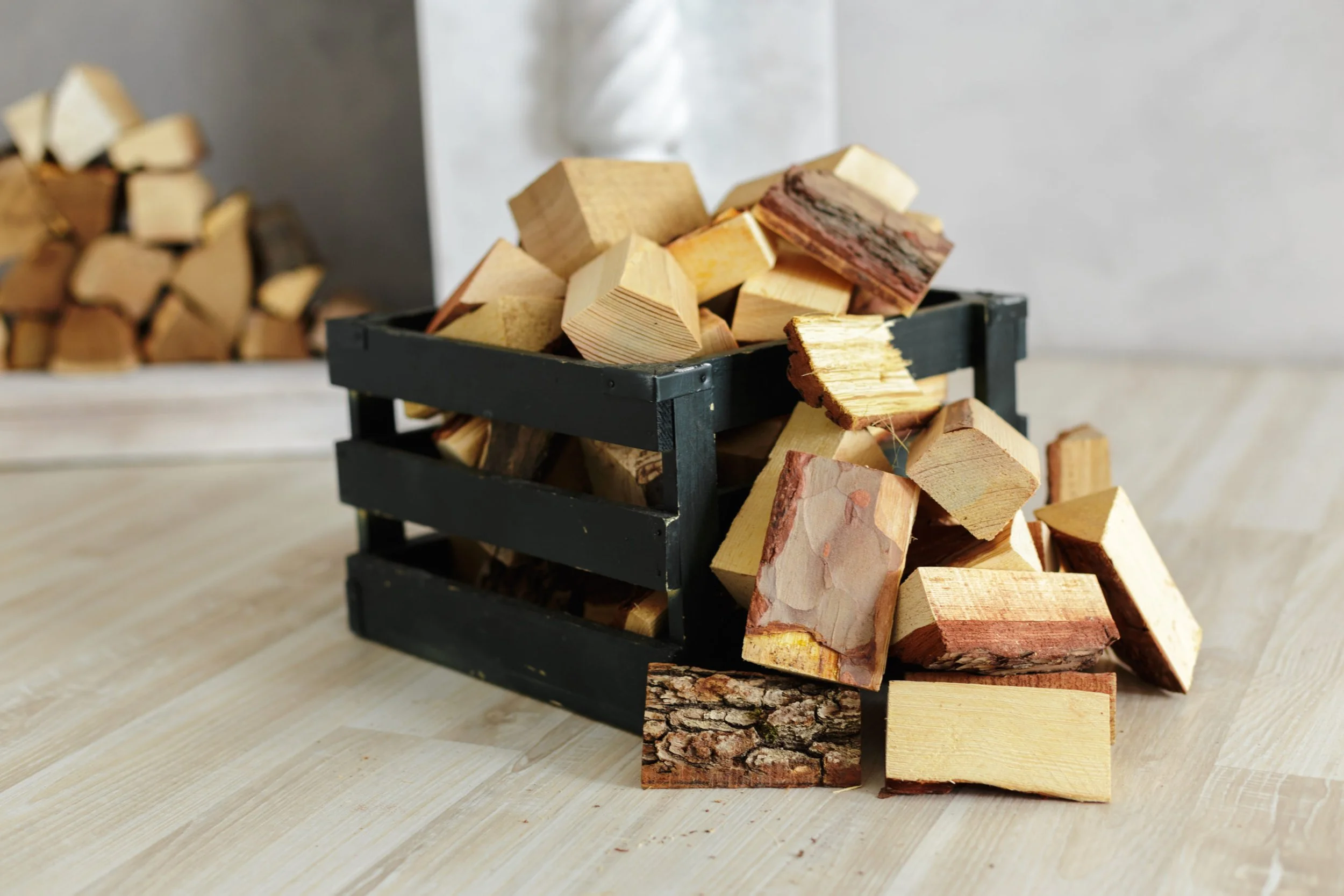Keeping the Fires Burning: A Study of Texas BBQ Wood
In the realm of Texas barbecue (What wine goes well with barbecue?), the choice of wood used for smoking is of paramount importance in achieving the distinct and coveted smoky flavor. The type of wood selected plays a pivotal role in imparting unique characteristics to the meat, creating a symphony of flavors that tantalize the taste buds. Understanding how different woods burn, the smoke they produce, and their impact on the final product is key to mastering the art of Texas barbecue. In this article, we will delve into the world of Texas BBQ wood, exploring its influence on smoke flavor, the burning process, and the range of smoke colors that emerge, from pale blue to gray and black.
Smoke Flavor
The smoke flavor is an essential component of the unmistakable taste and aroma found in Texas barbecue. It is the result of the burning wood releasing flavorful compounds that infuse into the meat during the cooking process. The type of wood used plays a vital role in determining the flavor, as different woods produce distinct flavors and aromas. As the wood burns, it generates smoke that carries these flavors and imparts them onto the meat, creating a delicious and smoky experience.
Achieving the desired flavor requires careful attention to the burning process. Pitmasters aim to achieve a clean and optimal burn that produces pale blue smoke particles. This type of smoke indicates a well-regulated combustion, with the wood burning efficiently and at the ideal temperature. The pale blue smoke imparts a delicate and nuanced flavor to the meat, enhancing its natural taste without overpowering it. However, it's important to note that gray and black smoke can occasionally occur during the burning process. Pitmasters need to monitor the smoke color and make necessary adjustments to maintain the desired flavor.
Certain woods, such as nut woods like pecan or walnut, bring their own unique characteristics to the flavor in Texas barbecue. These woods produce a rich and nutty aroma that adds depth and complexity to the meat. The burning of nut woods, with their distinct combustion properties, contributes to the creation of a flavorful and aromatic smoke. Additionally, the use of wood chips is common in Texas barbecue to generate smoke flavor. These small pieces of wood are added to the fire or placed in a smoker box, releasing smoke as they burn. The choice of wood chips, whether it's mesquite, hickory, or fruit woods, allows pitmasters to tailor the flavor to their preference and create a signature taste that sets their barbecue apart. Looking to get that great smoke flavor? Check out our recipe for Texas Style Smoked Pork Belly (What wine goes well with pork belly?) .
Burning Wood
The process of burning wood is a crucial aspect of Texas barbecue, as it directly impacts the flavor and overall cooking experience. When wood burns, it releases flavorful compounds that infuse into the meat, creating the distinctive smoky taste that is highly sought after. Achieving the desired flavor requires careful management of the burning wood.
Pitmasters in Texas pay close attention to how the wood burns to produce the optimal smoke for their barbecue. The goal is to achieve a clean burn that produces pale blue smoke particles. This pale blue smoke indicates a well-regulated combustion process, where the wood burns efficiently with the right mix of oxygen and fuel. The pale blue smoke imparts a subtle and delicate flavor to the meat, enhancing its natural taste without overwhelming it. However, it is important to note that gray and black smoke can occur during the burning process. Pitmasters need to monitor the smoke color and make necessary adjustments to maintain the desired flavor.
Wood chips are commonly used in Texas barbecue to facilitate the burning process and generate smoke. These small pieces of wood are added to the fire or placed in a smoker box to release smoke as they burn. The choice of wood chips, such as nut woods or other preferred varieties, contributes to the flavor profile of the smoke. Different woods burn at different rates and produce unique smoke flavors. Pitmasters carefully select wood chips based on their desired flavor profiles, allowing them to tailor the smoke to their preference and create a truly distinctive barbecue experience. This greatly help in making BBQ more tasty. If you are around San Antonio and looking for best BBQ restaurants, click here.
Smoke Color
In Texas barbecue, the color of the smoke is an important indicator of the burning process and can significantly impact the resulting smoke flavor. Ideally, pitmasters strive to achieve pale blue smoke particles, as they represent a clean and optimal burn. This type of smoke indicates a well-regulated combustion process, with the wood burning efficiently and at the right temperature. Pale blue smoke imparts a subtle and delicate flavor to the meat, enhancing its natural taste without overpowering it.
However, pitmasters need to be mindful of the possibility of gray and black smoke during the burning process. Gray smoke can occasionally happen and may indicate incomplete combustion or a lack of oxygen. When wood burns with insufficient airflow, it can lead to the production of gray smoke, which may result in a bitter or acrid flavor. Black smoke is often a sign of incomplete combustion and can impart an undesirable taste to the meat. Pitmasters carefully monitor the smoke color and make adjustments to maintain the desired pale blue smoke and avoid any unpleasant flavors.
The use of wood chips, such as nut woods or other preferred varieties, can also influence the smoke color in Texas barbecue. Different woods burn at different rates and produce varying colors of smoke. For example, some woods may produce gray or black smoke more easily than others. Pitmasters select wood chips based on their desired flavor profile and smoke color, allowing them to create the perfect balance of smoke flavor in their barbecue. By choosing the right wood chips and managing the burning process, pitmasters can ensure a consistent and desirable smoke color that enhances the overall barbecue experience. In Texas, when talking about BBQ, smoked beef brisket (What wine goes well with beef brisket?) is the crown jewel. For a detailed information, check out this link.
Texas Barbecue Woods
In the realm of Texas barbecue, the selection of wood is a fundamental aspect that greatly influences the smoke flavor and overall cooking experience. Different types of wood bring their distinct characteristics to the table, infusing the meat with unique smoky nuances. From the enticing aroma of the burning wood to the pale blue smoke gracefully enveloping the meat, understanding the qualities of various kinds of wood and their burning properties is key to achieving exceptional barbecue.
Mesquite
Mesquite is a beloved wood choice in Texas barbecue, known for its strong and intense flavor. When mesquite wood burns, it produces gray and black smoke, which adds depth and complexity to the meat being smoked. The burning characteristics of mesquite wood contribute to its distinctive flavor profile. It burns hot and fast, making it ideal for achieving a quick sear and imparting a robust smokiness to the meat. However, pitmasters must exercise caution as gray smoke can occasionally happen during the combustion process. Monitoring the smoke color and adjusting the burning technique is crucial for maintaining optimal temperature control and avoiding any bitter or acrid flavors.
Mesquite is classified as a nut wood and is often used alongside other fruit woods to create a unique blend of flavors. It is highly valued for its ability to infuse a rich and earthy taste into meats such as beef brisket. The smoldering wood products produced by Mesquite result in lots of smoke, enhancing the overall sensory experience of the barbecue. The smoke wood from Mesquite is characterized by its pure white smoke, indicating a clean burn and optimal temperature control.
To achieve the best results with mesquite, it is essential to use dry wood that has been properly seasoned. This allows for efficient combustion and consistent smoke production. The density of mesquite wood provides a steady and reliable heat source, making it easier to maintain a controlled cooking environment. The combination of its unique flavor and burning characteristics makes mesquite a prized wood in the world of Texas barbecue, cherished for its ability to elevate the taste of various types of meat and create unforgettable culinary experiences.
Oak
Oak is a versatile wood that holds a significant place in Texas barbecue. When oak wood burns, it produces a clean and pale blue smoke, which is highly desirable for imparting a balanced and subtle smokiness to the meat. Unlike some other woods, oak tends to burn at a moderate pace, providing a steady and consistent source of heat. This makes it easier for pitmasters to maintain precise temperature control during the smoking process. However, it is important to note that like any wood, gray smoke can occasionally occur. Careful monitoring of the smoke color and adjustments to the burning technique help achieve optimal results.
Categorized as a nut wood, oak is often favored for its reliable burning characteristics and versatility. Its smoldering wood products yield a moderate amount of smoke, ensuring a flavorful result without overwhelming the meat. Oak smoke wood is known for producing pure white smoke, indicating a clean burn that enhances the natural flavors of the meat. This makes oak a popular choice for a variety of meats, including brisket, ribs, and poultry, as it complements their flavors without overpowering them.
To achieve the best outcome with oak, it is recommended to use dry wood that has been properly seasoned. Dry oak wood allows for efficient combustion and consistent smoke production. Its density and heat properties make oak well-suited for longer cooking times, resulting in tender and juicy cuts of meat. With its clean and balanced smoke, oak wood provides pitmasters with a reliable and versatile option for achieving exceptional Texas barbecue flavors while maintaining optimal temperature control throughout the smoking process.
Pecan
Pecan wood is a highly regarded choice in Texas barbecue, valued for its sweet and nutty flavor. When pecan wood burns, it produces a light gray and black smoke, creating a captivating aroma and adding a touch of complexity to the meat. Pecan wood burns slowly and evenly, making it an excellent option for achieving a steady and controlled heat source during the smoking process. However, as with any wood, gray smoke can occasionally happen. It is important for pitmasters to carefully monitor the smoke color and adjust the burning technique to ensure optimal temperature control and prevent the development of any bitter or acrid flavors.
As a nut wood, pecan is often used alongside other fruit woods to enhance the overall flavor profile of the barbecue. Its smoldering wood products yield a moderate amount of smoke, allowing for a balanced infusion of smokiness without overpowering the meat. The smoke wood produced by pecan is characterized by its pure white smoke, indicating a clean burn and optimal temperature control. This helps maintain the natural flavors of the meat while adding a delightful and subtle smoky essence.
To achieve the best results with pecan wood, it is advisable to use dry wood that has been properly seasoned. Dry pecan wood ensures efficient combustion and consistent smoke production. The temperature control provided by pecan wood allows for precise cooking, resulting in meats that are tender, flavorful, and perfectly smoked. With its sweet and nutty flavor, along with its controlled burning characteristics, pecan wood offers pitmasters a unique and desirable option for enhancing the taste of their Texas barbecue creations.
Hickory
Hickory wood is renowned for its strong and bold flavor, making it a popular choice in Texas barbecue. When hickory wood burns, it produces gray and black smoke, adding a distinct aroma and imparting a robust smokiness to the meat. Hickory burns hot and fast, making it ideal for achieving a quick sear and intense smoky flavor. However, it's important to note that gray smoke can occasionally happen during the combustion process. Pitmasters need to monitor the smoke color closely and adjust the burning technique to ensure optimal temperature control and prevent the development of any bitter or acrid flavors.
Categorized as a nut wood, hickory is often used in combination with fruit woods to create a unique and layered flavor profile. Its smoldering wood products yield a significant amount of smoke, contributing to a rich sensory experience. The smoke wood produced by hickory consists of pure white smoke mixed with gray soot, indicating a controlled burn and optimal temperature regulation. This unique combination of smoke characteristics enhances the natural flavors of the meat and imparts a slightly sweet taste that pairs well with a variety of meats, including pork, ribs, and poultry.
To achieve the best results with hickory, it is recommended to use dry wood that has been properly seasoned. Dry hickory wood ensures efficient combustion and consistent smoke production. The heat generated by hickory wood allows for precise temperature control, resulting in meats that are succulent, flavorful, and perfectly smoked. With its strong and bold flavor profile, along with its controlled burning characteristics, hickory wood offers pitmasters a distinct and sought-after option for infusing their Texas barbecue with a robust smokiness that is both enticing and memorable.
Fruit Woods
Fruit woods, such as apple, cherry, and peach, are highly regarded in the world of barbecue for the unique and delicate flavor they bring to the table. These woods are prized for their ability to infuse a subtle fruity essence into the meat, enhancing its natural flavors without overpowering them. When burned, fruit woods produce a pale blue smoke that indicates a clean and efficient burn, resulting in a desirable and aromatic smoke flavor.
The wood burns evenly and consistently, allowing for precise temperature control during the cooking process. This is crucial in achieving the optimal flavor without the risk of excessive smoke or bitter flavors. Fruit woods are often used in the form of wood chips or chunks, which are added to the fire or placed in a smoker box to release smoke as they burn. This allows for a controlled release of the delicate smoke, imparting just the right amount of flavor to the meat.
The smoke produced by fruit woods consists of pale blue smoke, which is indicative of a well-regulated combustion process. This pure white smoke is sought after by pitmasters as it ensures a clean and optimal burn, resulting in a desirable smoke flavor. It is important to note that gray and black smoke can occasionally happen during the burning process, but careful monitoring and adjustment of the burning conditions can help maintain the ideal pale blue smoke. By harnessing the flavor of fruit woods, pitmasters can add a subtle and pleasant fruity note to their barbecue creations, creating a unique and memorable taste experience.
Buy Cherry Wood Here, Buy Apple Wood Here, Buy Peach Wood Here
Post Oak
Post Oak is a highly revered wood in the world of Texas barbecue, known for its exceptional smoke flavor and its versatility in enhancing a wide range of meats. This hardwood, with its dense composition, burns slowly and consistently, making it an excellent choice for low and slow-cooking methods. When Post Oak wood burns, it produces a pale blue smoke, indicating a clean and optimal burn that infuses the meat with a rich, smoky flavor.
The flavor imparted by Post Oak is characterized by its mellow and balanced profile. It complements the natural flavors of the meat without overpowering them, allowing the true essence of the ingredients to shine through. The pale blue smoke that arises from burning Post Oak wood signifies a well-regulated combustion process, resulting in a desirable smoke flavor that is highly sought after in Texas barbecue.
In addition to its flavor, Post Oak offers the advantage of providing precise temperature control during the cooking process. Its slow and steady burn allows pitmasters to maintain consistent heat levels, ensuring even cooking and flavorful results. Whether it's used in the form of wood chips, chunks, or logs, Post Oak wood is a go-to choice for many barbecue enthusiasts who value its reliable performance and its ability to impart a distinctive smoky taste to their culinary creations.
Wood Combinations
When it comes to Texas barbecue, the choice of wood plays a crucial role in imparting distinctive flavors and aromas to the meat. Pitmasters take pride in crafting the perfect combination of wood to create a symphony of flavors that tantalize the taste buds. The art of selecting and combining different woods is a time-honored tradition that adds depth and complexity to the barbecue experience. Each wood brings its own unique characteristics, and when combined, they create a harmonious blend of flavors that elevate the barbecue to new heights.
From the smoky richness of mesquite to the subtle sweetness of fruit woods, there is a wide array of wood options available to pitmasters in Texas. The choice of wood combinations allows for endless experimentation, resulting in distinct flavor profiles and mouthwatering results. Whether it's a blend of bold and robust woods or a delicate combination of sweet and mellow flavors, the possibilities are limited only by the pitmaster's creativity and imagination.
Let's explore a few popular wood combinations used in Texas barbecue. These combinations have been perfected over generations, with each one offering a unique taste experience. Whether you're aiming for a well-balanced flavor or a bold and smoky profile, these wood combinations can help you achieve the desired results. Embrace the art of combining different woods, and let your creativity soar as you embark on a flavorful journey through the world of Texas barbecue.
Oak and Mesquite
The combination of oak and mesquite in Texas barbecue offers a unique and flavorful experience, blending the characteristics of these two woods to create a memorable smoky profile. Oak, known for its versatility, brings a mellow and balanced smoke flavor to the table. It burns steadily, producing pale blue smoke that indicates a clean and optimal burn. The oak wood chips provide a reliable source of heat and consistent smoke, allowing for precise temperature control during the cooking process.
Mesquite, on the other hand, is renowned for its bold and robust smoke flavor. It burns hot and fast, producing a rich and earthy aroma that infuses the meat with a distinctive taste. Mesquite wood chips add intensity and depth to the smoky profile, creating a flavor that is particularly well-suited for beef and game meats. However, it's important to exercise caution when using mesquite, as it can produce gray and black smoke due to its high combustion rate. Monitoring the smoke color and adjusting the burning process is essential to achieve the desired pale blue smoke and avoid any bitter or acrid flavors.
When combined, the oak and mesquite woods create a harmonious balance of flavors. The mellow smoke flavor of oak complements the boldness of mesquite, resulting in a well-rounded and complex smoky profile. This combination is often used to enhance the taste of various types of meat, adding depth and richness to the barbecue. The controlled burn of oak alongside the distinct smoke of mesquite creates a captivating aroma and a true taste of Texas barbecue.
Pecan and Cherry
Pecan and cherry wood bring a delightful blend of flavors and aromas to the meat. Pecan wood is a favored choice among pitmasters for its pleasant and nutty smoke flavor. This wood is known for its slow and steady burn, providing a consistent source of heat and smoke. Pecan wood chips are commonly used to add a mild yet distinctive smoky profile to various types of meat, enhancing their natural flavors with a touch of nuttiness.
Cherry wood, on the other hand, adds a unique dimension to the barbecue experience with its fruity and slightly sweet smoke flavor. When burning cherry wood, it's important to ensure a clean combustion process to achieve the desired pale blue smoke. The combination of pecan and cherry wood creates a balance of flavors, where the nuttiness of pecan intertwines with the sweetness of cherry. This combination is often used to enhance the taste of pork, poultry, and even seafood, imparting a delicate and aromatic smokiness that elevates the overall flavor profile.
While using the pecan and cherry wood combination, pitmasters should pay attention to the burning process to avoid the occurrence of gray or black smoke. Proper combustion and temperature control are crucial to achieve a clean burn and prevent any bitter or acrid flavors. The pecan and cherry wood combination offers a unique and nuanced smoke flavor that adds complexity to Texas barbecue, creating a memorable dining experience for barbecue enthusiasts.
Hickory and Apple
Combining hickory and apple wood brings together the robust smokiness of hickory and the subtle sweetness of apple, resulting in a harmonious and flavorful experience. Hickory wood is known for its strong and distinct flavor, which adds a rich and hearty profile to the meat. The wood chips derived from hickory are widely used in barbecue to infuse a deep, smoky flavor into a variety of meats, including pork, beef, and poultry.
In contrast, applewood contributes a milder and slightly sweet flavor that complements the intensity of hickory. Apple wood chips are popularly used to add a touch of fruitiness to the smoke profile, particularly well-suited for pork and poultry. The combination of hickory and apple wood provides a balance of flavors, where the robustness of hickory is softened by the delicate sweetness of apple, resulting in a well-rounded and complex smoky profile.
When using the hickory and apple wood combination, it's important to ensure the proper combustion process to achieve the desired pale blue smoke and avoid any gray or black smoke. Monitoring the temperature and adjusting the burning process accordingly is crucial for maintaining a clean burn and preventing bitter or acrid flavors. The hickory and apple wood combination offers a unique and dynamic flavor that adds depth and character to Texas barbecue, creating a truly memorable culinary experience.
Mesquite and Post Oak
Adding mesquite and post oak wood is a classic and popular choice that brings a unique smoky flavor to the meat. Mesquite wood is known for its intense and bold flavor, infusing the meat with a distinct southwestern taste. Mesquite wood chips are commonly used in barbecue to add a robust and earthy smokiness to various types of meat, particularly beef and game meats.
On the other hand, post oak wood offers a milder and more subtle smoke flavor compared to mesquite. Post oak wood chips are highly regarded in Texas barbecue for their ability to impart a well-rounded smoky profile without overwhelming the natural flavors of the meat. The combination of mesquite and post oak creates a balance of flavors, where the intensity of mesquite is softened by the milder characteristics of post oak, resulting in a delicious and complex smoke profile.
When using the mesquite and post oak wood combination, it is important to pay attention to the burning process to achieve the desired pale blue smoke and prevent any gray or black smoke. Proper combustion and temperature control are crucial to maintain a clean burn and avoid any bitter or acrid flavors. The mesquite and post oak wood combination offers a unique and enticing flavor that is deeply rooted in the traditions of Texas barbecue, providing an authentic and memorable dining experience.
Pecan and Maple
A pecan and maple wood combination creates a delightful fusion of flavors that adds a unique twist to the smoky profile of the meat. Pecan wood is renowned for its nutty and sweet flavor, while maple wood offers a subtly sweet and mild smokiness. When burned properly, both pecan and maple produce pale blue smoke, indicating a clean and optimal burn. Pecan wood chips contribute a rich and distinct flavor, while maple wood chips bring a delicate sweetness to the smoke.
Pecan wood, being a nut wood, adds a depth of flavor to the barbecue, enhancing the natural taste of various types of meat, including beef, pork, and poultry. Its slow and steady burn provides a consistent source of heat and smoke, allowing the flavors to penetrate the meat gradually. On the other hand, maple wood complements the pecan's nuttiness with its mild and slightly sweet flavor. It imparts a gentle smokiness that enhances the overall taste of the meat without overpowering it.
When using the pecan and maple wood combination, it is important to ensure a clean combustion process to achieve the desired pale blue smoke and avoid any gray or black smoke. This can be achieved through proper temperature control and the use of dry wood chips. The combination of pecan and maple wood brings together a delightful balance of flavors, creating a smoky profile that is both nuanced and enjoyable. It is a popular choice among barbecue enthusiasts looking to add a touch of sweetness to their dishes while maintaining a well-rounded and satisfying flavor.
Oak and Fruit Woods
Offering a unique and dynamic flavor profile, oak and fruitwood brings a delightful balance of smoke and sweetness to the meat. Oak wood is known for its versatility and ability to provide a steady, even burn. Oak wood chips are commonly used in barbecue to add a robust smokiness that complements a variety of meats, from beef and pork to poultry and fish.
Fruit woods, such as apple, cherry, and peach, contribute a distinct sweetness to the smoke. When burned properly, these woods produce pale blue smoke, similar to oak, resulting in a clean and desirable smoky flavor. Fruitwood chips are popular in Texas barbecue for their ability to infuse the meat with a gentle sweetness that pairs well with various types of meat. Applewood offers a slightly sweet and fruity aroma, while cherry wood adds a rich and aromatic smokiness. Peachwood imparts a subtle and delicate sweetness to the meat.
The combination of oak and fruit woods creates a harmonious blend of flavors, where the smokiness of the oak is complemented by the sweetness of the fruit woods. This combination adds depth and complexity to the smoke profile, enhancing the overall taste of the meat. It is important to monitor the burning process carefully to achieve the desired pale blue smoke and prevent any gray or black smoke. The oak and fruitwood combination is favored by barbecue enthusiasts looking to add a touch of sweetness to their dishes while maintaining a balanced and flavorful smoke profile.
Conclusion
The choice of wood in Texas barbecue plays a crucial role in determining the flavor, aroma, and overall quality of the smoked meats. Each type of wood brings its unique characteristics to the barbecue pit, offering a distinct smoke flavor and burning behavior. The ideal outcome is to achieve a clean and optimal burn that enhances the taste of the meat without overpowering it.
Whether it's the rich and robust flavor of oak, the nutty sweetness of pecan, the intense smokiness of mesquite, or the delicate sweetness of fruit woods, such as apple or cherry, the selection of wood combinations allows pitmasters to create a diverse range of flavors and profiles in their barbecue. The skillful management of the burning process, temperature control, and the use of high-quality wood chips contribute to achieving the desired smoke color and avoiding any undesirable gray or black smoke.
Texas barbecue enthusiasts take pride in the art of smoking meat, and the choice of wood is a vital element in their craft. The careful selection and combination of woods provide a nuanced and layered flavor experience that sets Texas barbecue apart. Whether it's the classic oak and mesquite combination, the delightful mix of pecan and maple, or the balanced pairing of oak and fruit woods, the right choice of wood can elevate the barbecue to new heights, creating a memorable and mouthwatering culinary experience for all who indulge in the smoky delights of Texas barbecue.




